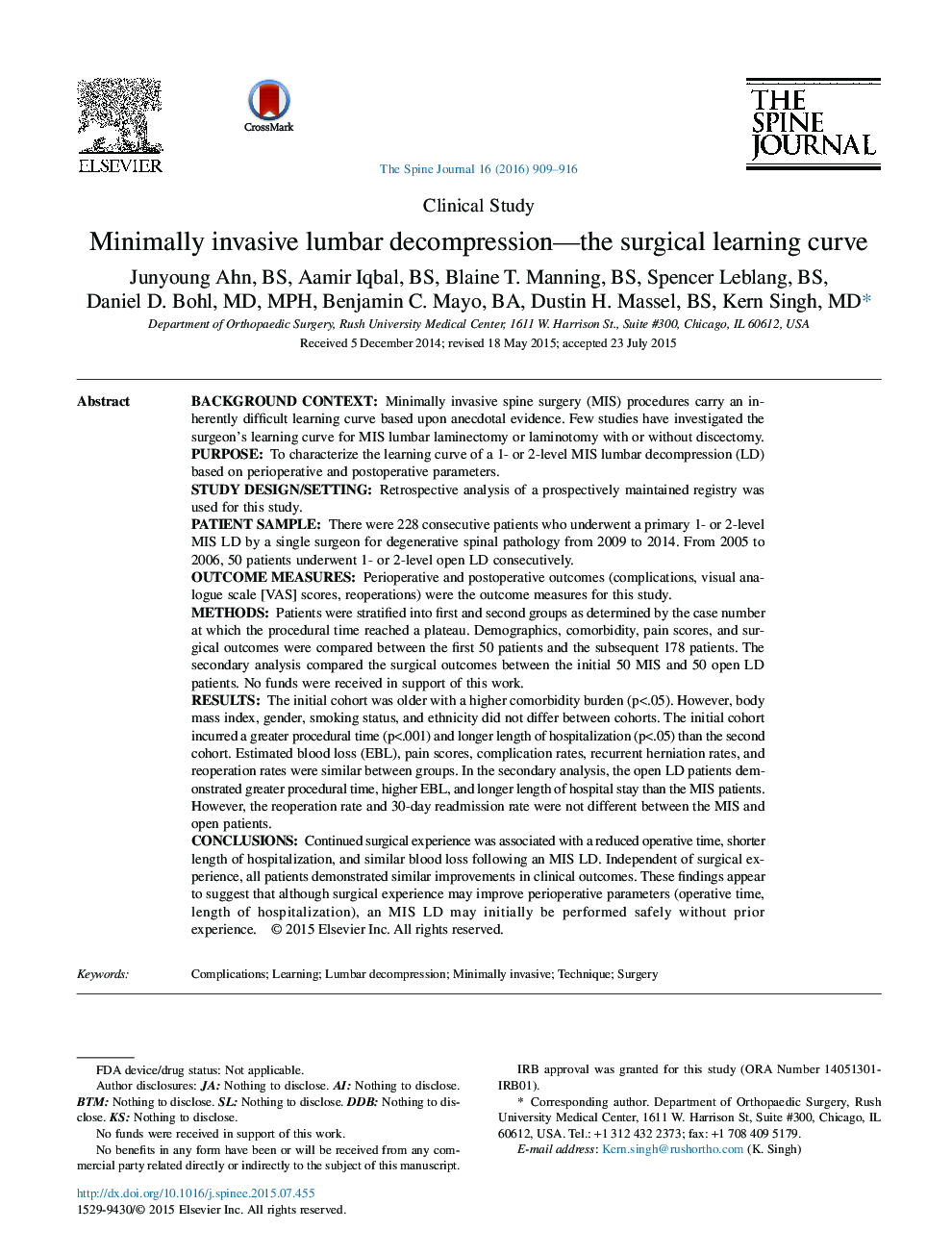| کد مقاله | کد نشریه | سال انتشار | مقاله انگلیسی | نسخه تمام متن |
|---|---|---|---|---|
| 4095785 | 1268547 | 2016 | 8 صفحه PDF | دانلود رایگان |
Background ContextMinimally invasive spine surgery (MIS) procedures carry an inherently difficult learning curve based upon anecdotal evidence. Few studies have investigated the surgeon's learning curve for MIS lumbar laminectomy or laminotomy with or without discectomy.PurposeTo characterize the learning curve of a 1- or 2-level MIS lumbar decompression (LD) based on perioperative and postoperative parameters .Study Design/SettingRetrospective analysis of a prospectively maintained registry was used for this study.Patient SampleThere were 228 consecutive patients who underwent a primary 1- or 2-level MIS LD by a single surgeon for degenerative spinal pathology from 2009 to 2014. From 2005 to 2006, 50 patients underwent 1- or 2-level open LD consecutively.Outcome MeasuresPerioperative and postoperative outcomes (complications, visual analogue scale [VAS] scores, reoperations) were the outcome measures for this study.MethodsPatients were stratified into first and second groups as determined by the case number at which the procedural time reached a plateau. Demographics, comorbidity, pain scores, and surgical outcomes were compared between the first 50 patients and the subsequent 178 patients. The secondary analysis compared the surgical outcomes between the initial 50 MIS and 50 open LD patients. No funds were received in support of this work.ResultsThe initial cohort was older with a higher comorbidity burden (p<.05). However, body mass index, gender, smoking status, and ethnicity did not differ between cohorts. The initial cohort incurred a greater procedural time (p<.001) and longer length of hospitalization (p<.05) than the second cohort. Estimated blood loss (EBL), pain scores, complication rates, recurrent herniation rates, and reoperation rates were similar between groups. In the secondary analysis, the open LD patients demonstrated greater procedural time, higher EBL, and longer length of hospital stay than the MIS patients. However, the reoperation rate and 30-day readmission rate were not different between the MIS and open patients.ConclusionsContinued surgical experience was associated with a reduced operative time, shorter length of hospitalization, and similar blood loss following an MIS LD. Independent of surgical experience, all patients demonstrated similar improvements in clinical outcomes. These findings appear to suggest that although surgical experience may improve perioperative parameters (operative time, length of hospitalization), an MIS LD may initially be performed safely without prior experience.
Journal: The Spine Journal - Volume 16, Issue 8, August 2016, Pages 909–916
